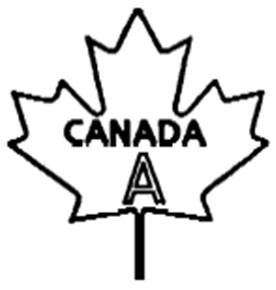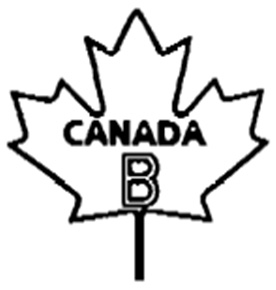Canadian Grade Compendium: Volume 5 – Eggs
Egg Grade Requirements
Interpretation
1. The following definitions apply in this volume.
"blood spot" means a small particle of blood on the yolk or in the albumen of an egg. (caillot sanguin)
"candling" means examining the interior condition of an egg by rotating or causing the egg to rotate in front of or over a light source that illuminates the contents of the egg. (mirage)
"dirt" means any egg yolk, manure, soil or foreign matter that can be readily removed from the shell of an egg. (saleté)
"meat spot" means a small particle of the oviduct of the domestic hen on the yolk or in the albumen of an egg. (tache de chair)
"size designation" means Jumbo Size, Extra Large Size, Large Size, Medium Size, Small Size or Peewee Size. (désignation de calibre)
"stain" means any substance on the shell of an egg, other than dirt or a dye mark or a design or an emblem stamped thereon. (tache)
"under-grade" means an egg that does not meet the requirements for the grade at which it is graded. (inférieur à la catégorie)
Grades and Grade Names
2. There are four grades of eggs with the grade names Canada A, Canada B, Canada C and Canada Nest Run (see Volume 9 Import Grade Requirements for grade names used for imported eggs).
3. (1) A prepackaged egg that meets the grade requirements must bear the applicable grade name as shown in the Egg Grade Names Schedule.
(2) The size designation referred to in section 5 must be shown
- (a) in the case of a tray with an overwrap or a carton, in characters of not less than 3 mm in height, and
- (b) in the case of a container other than a tray with an overwrap or a carton, in characters not less than 13 mm in height.
Canada A
4. (1) An egg graded Canada A must
- (a) show, on candling
- (i) a reasonably firm albumen,
- (ii) an indistinct yolk outline,
- (iii) a round yolk that is reasonably well centered, and
- (iv) an air cell that is not in excess of 5 mm in depth;
- (b) have a shell that
- (i) has not more than three stain spots, the aggregate area of which does not exceed an area equivalent to 25 mm2 and is otherwise free of dirt and stain,
- (ii) is normal or nearly normal in shape but may have rough areas and ridges other than heavy ridges, and
- (iii) is uncracked; and
- (c) be also graded for size, as set out in section 5.
(2) Despite subsection (1), if an inspector, before grading, inspects a sample from a lot, the eggs in that lot must not be graded as Canada A unless the sample meets the following requirements
- (a) the quality factor of albumen firmness of the eggs in the sample averages 67 Haugh units or higher;
- (b) the sample does not contain more than
- (i) 10% of eggs with cracked shells;
- (ii) 5% of eggs with dirt on the shells if the dirt on the shell is more than 160 mm2 in size but covers less than 1/3 of the area of the shell;
- (iii) 2.5% of eggs with dirt on the shells if the dirt covers 1/3 or more of the area of the shell;
- (iv) 5% of eggs with stains on the shells if the stains cover more than 1/2 the area of the shell;
- (v) 10% of eggs with rough, ridged or misshapened shells;
- (vi) 5% of eggs with an air cell in excess of 5 mm in depth; and
- (vii) 2.5% of eggs that are leakers; and
- (c) the sample does not contain more than a total of 15% of eggs described in subparagraphs (b)(i) to (vii).
(3) If eggs graded Canada A or having the grade name Grade A (see Volume 9 Import Grade Requirements for grade names used for imported eggs) are inspected at a place other than where they were graded or packaged, not more than 10% of the total number of eggs examined may be under-grade and not more than 7% of the total number of eggs examined may be under-grade by reason of causes other than cracked shells.
(4) If eggs graded Canada A or having the grade name Grade A are inspected on the premises of a retailer, the depth of the air cell must not be taken into account in determining under-grades.
Egg Size for Canada A Eggs
5. (1) There are six size designations of Canada A eggs and of Grade A eggs with the size designations Jumbo Size, Extra Large Size, Large Size, Medium Size, Small Size or Peewee Size.
(2) Canada A eggs, having the size designation set out in Column 1 of an item of the Table for Size Designations for Canada A Eggs must have a weight set out in Columns 2 or 3 of the item, as applicable.
| Item | Column 1 | Column 2 | Column 3 |
|---|---|---|---|
| Size Designation | Egg Weighs Not Less Than | Egg Weighs Less Than | |
| 1. | Jumbo Size | 70 g | |
| 2. | Extra Large Size | 63 g | |
| 3. | Large Size | 56 g | |
| 4. | Medium Size | 49 g | |
| 5. | Small Size | 42 g | |
| 6. | Peewee Size | 42 g |
(3) In the case of prepackaged eggs graded Canada A, more than one size designation may be shown on the container, other than a tray with an overwrap or a carton, if the size designation of the eggs in the container is clearly shown on the container.
Canada B
6. (1) An egg graded Canada B must
- (a) weigh at least 49 g;
- (b) be uncracked; and
- (c) show
- (i) on candling, a distinct yolk outline,
- (ii) on candling, a yolk that is moderately oblong in shape and that floats freely within the egg when twirled,
- (iii) on candling, a very slight degree of germ development,
- (iv) on candling, an air cell not in excess of 9 mm in depth;
- (v) stain spots on the shell, where the aggregate area of the stain does not exceed 320 mm2 and the shell is otherwise free of dirt, or
- (vi) a shell that is slightly abnormal in shape and has rough areas and definite ridges.
(2) If eggs graded as Canada B or having the grade name Grade B (see Volume 9 Import Grade Requirements for grade names used for imported eggs) are inspected at a place other than where they were graded or packaged, not more than 10% of the total number of eggs examined may be under-grade and not more than 7% of the total number of eggs examined may be under-grade by reason of causes other than cracked shells.
(3) If eggs graded Canada B or having the grade name Grade B are inspected on the premises of a retailer, the depth of the air cell must not be taken into account in determining under-grades.
Canada C
7. (1) An egg graded Canada C must
- (a) be free from dirt; and
- (b) show
- (i) on candling, a prominent yolk outline,
- (ii) on candling, a yolk that is definitely oblong in shape but does not adhere to the shell membrane,
- (iii) on candling, meat spots or blood spots not in excess of 3 mm in diameter,
- (iv) stain spots on the shell, the aggregate area of which does not exceed 1/3 of the shell surface of the egg, or
- (v) a shell that is cracked, when the internal contents are not leaking.
(2) Not more than 5% of the eggs in a lot graded as Canada C or having the grade name Grade C (see Volume 9 Import Grade Requirements for grade names used for imported eggs) may show stain spots that exceed 1/3 of the shell surface of each of the eggs.
Canada Nest Run
8. Eggs in a lot must not be graded as Canada Nest Run unless
- (a) the lot does not contain more than
- (i) 10% of eggs with cracked shells,
- (ii) 5% of eggs with dirt on the shells where the dirt is more than 160 mm2 in size, and
- (iii) 3% of eggs that are leakers or rejects; and
- (b) the lot does not contain more than a total of 15% of eggs described in paragraph (a).
Schedule – Egg Grade Names


CANADA
C
CANADA NEST RUN/CANADA OEUFS TOUT-VENANT
REJECTS/REJETÉS
- Date modified: